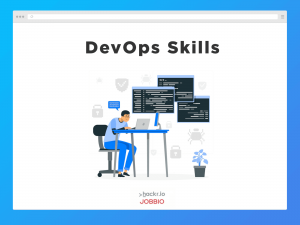The internet today is booming with cloud, big data, machine learning, deep learning, IoT and AI (Artificial intelligence). The reason is that these technologies are bringing the world closer by integrating various systems and performing human-like tasks improving productivity and saving loads of money and time!
While the world is going gaga about AI and its potential uses, there are many instances where we can hear the word machine learning alongside AI.
The terms AI and machine learning are often confused and used interchangeably. However, as we delve deeper into both concepts, we realize that both are different. Before jumping into the differences, let us understand some crucial information about both with common examples.
What is Machine learning?
By now, most of us are used to online shopping with big brands like Flipkart, Amazon, and others that have a huge range of products. Let’s say you want to purchase a new phone on Amazon. You browse through various models, collect the data, read reviews – and leave it at that thinking of continuing back later. The next time you open Amazon, you will have a more personalized experience. Amazon will show you more phones and accessories related to what you have been seeing the last time. It will give you suggestions based on your previous browsing trend. Effectively, Amazon is trying to improve your browsing experience! No! No one is spying on you! It happens with all the millions of users browsing online! There is an algorithm that runs throughout, that keeps track of your browsing trends only to constantly improve it every time. The machine learns on its own, that’s why the name – machine learning!
Simply put, machine learning is the study of algorithms that perform specific tasks without the need for explicit instructions. The system relies on common patterns and interference. Good machine learning systems should be able to prepare and interpret different types of data, have intelligent algorithms, follow iterative and automated processes and be scalable.
Machine learning can be of various types – supervised learning, unsupervised learning, partially supervised learning and active learning.
What is Artificial Intelligence(AI)?
AI is wider in its scope compared to Machine Learning. What could be only done by humans up till now, AI attempts to do all of that. For example, a tennis game on Xbox, where you play against the computer, or human-AI interaction virtual assistants like Alexa, Cortana or Siri, who understand your questions and respond accordingly.
The definition of AI has been evolving along with new advancements in technology and what we consider today as AI may not be a valid example in say 20 years from now. For example, two decades back, a game of chess with the computer was considered to be AI, but later on, every OS could implement it using a tree search algorithm which became quite predictable and dull.
We can thus safely infer that while the definition of machine learning is constant and limited, AI seems to have a definition that’s evolving with time and technological advancements. AI can be considered as a superset of machine learning or machine learning that has its own human-like intelligence.
The figure above shows how machine learning has evolved from the early concept of AI. AI has been around for a long time since the 1950s after which it branched into various goals, one of which is machine learning.
Start your AI Journey Today from here.
Recommended Course
Artificial Intelligence A-Z™: Learn How To Build An AI
How did it all start?
A bit of history never hurts. Rather, it can help you get interested in the topic even more. Artificial Intelligence is purely based on the fact that the human brain can be mechanized and trained. The observation that there could be a link between human intelligence and machines was not prominent until the late 1950s.
Norbert Weiner, a US mathematician, was the first to theoretically analyze that intelligent behavior was a result of constant feedback mechanisms. This sprouted the thought that mechanisms could be simulated by machines as well! Based on this, the first AI program ‘The Logic Theorist’ was designed by Newell and Simon in 1955. However, the official AI term was coined by John McCarthy in 1956, who is considered to be the father of AI.
Meanwhile, in the 1950s, ground-breaking machine learning research was conducted using basic algorithms. Machines could play Checkers, Tic-tac-toe and nearest neighbor using pattern recognition by late 1960s. However, it wasn’t until the 1990s that the scientists actually began creating programs to analyze huge amounts of data and learn from it by the way of statistical analysis.
As of 2016, Google’s AlphaGo became the first program that uses machine learning and tree search techniques to beat a human player.
With AI, the possibilities seem unlimited. In 2018, Google announced Google duplex, an extension of Google assistant, that goes on to book appointments on your behalf over the phone. The person on the other side may not even know if the person they are talking to is a human or not!
The key differences between AI and machine learning
Now that we have a fair understanding of what each term means, let us do a detailed comparison of both –
| S No. | MACHINE LEARNING | ARTIFICIAL INTELLIGENCE |
| 1 | Set of statistical data and techniques that a machine uses to improve itself and learn about its environment with experience. | Any technique that enhances a computer’s capacity to mimic human intelligence using set of rules, decision trees and machine learning logic. |
| 2 | Focuses on more accuracy by improving algorithms over time. | Focuses more on increasing the success percentage rather than 100 percent accuracy. |
| 3 | The machine takes facts and data, analyses the data and learns from the data. This cycle goes on. | It is a computer program that uses its own intelligence to think and perform like a human would do. |
| 4 | The ultimate aim is to maximize the performance of the machine for a particular task based on data. | The main aim is to simulate human-like intelligence using neural networks to solve complex problems. |
| 5 | The system learns from data. It does not make its own decisions. | The system makes decisions. |
| 6 | Since the entire derivation is from data, there is no behavioral learning. For example, the user may have clicked on a few links by mistake, but the data will still be interpreted as the user’s choice or interest. | AI leads to the development of a system that mimics how a human would behave under certain circumstances. For example, a driverless car would try to think and drive like a human. |
| 7 | ML is a centre of information and knowledge-based on facts and data collected over time. | AI is intelligence based on language processing, perception, motion and manipulation, and social intelligence. |
| 8 | ML is one of the many goals of AI. | AI has multiple goals like reasoning, computer vision, robotics, machine learning, etc… |
| 9 | Some examples include –
|
Some examples include –
|
From the differences, we find that machine learning has evolved from AI just like many other goals of AI. Consider AI as the huge cap which contains machine learning and many other associated goals.
What’s ahead?
Machine learning has been impacting businesses in more than one way. It has become an essential part of all the businesses and currently, technologists are looking for ways to blend IoT and machine learning to find another break-through. Machine learning can foster innovation through the exploration of different patterns in data. New solutions can be built or existing ones can be refined based on algorithms and data.
The ultimate aim of strong AI is to out-perform humans at almost every cognitive task. However, AI is one area that needs to be used carefully. For example, when an AI system controls your car, you might want to think about how safe it will be for a system to completely handle a car that needs the human sensory organs to work accurately. As we have seen earlier, AI still hasn’t achieved 100 % accuracy, but it is likely to be achieved because AI keeps evolving with constant feedback and self-improvement. With the super intelligence of AI used in a proper way, more diseases can be cured, poverty can be eradicated and people will be brought closest to the technology like never before. On the other hand, since AI enabled robots can exhibit various human emotions, if negative emotions overpower, there could be consequences.
As per predictions from Gartner,
- By 2020, 20% of citizens in developed nations will use AI assistants to help them with a host of everyday, operational tasks.
- In 2020, AI will create 2.3 million jobs while only eliminating 1.8 million jobs.
- By 2022, enterprise AI projects with built-in transparency will be 100% more likely to get funding from CIOs.
- By 2024, a scarcity of data scientists will no longer hinder the adoption of data science and machine learning in organizations.
People are also reading:
- Difference between Supervised vs Unsupervised Machine Learning
- Decision Tree in Machine Learning
- Machine Learning Algorithm
- Difference between Data Science vs Machine Learning
- Difference between Machine Learning and Deep Learning
- What is Artificial Intelligence?
- Benefits of Artificial Intelligence
- AI Applications
- AI Books
- Types of AI

![7 Best AI Coding Assistants In 2023 [Free + Paid]](jpg/16952882603blllo1oza.jpg)
![30 Cool, Easy & Fun Python Projects + Source Code [2023]](png/1655865129yuz5v1mdab.png)

![The 14 Best TensorFlow Courses in 2023 [Free + Paid]](png/1624550510xonrryd0t0.png)
![10 Best Design Books for Design Students [Updated]](png/1642872008wcnbdsvf6q.png)
![I Ranked the Top 5 Best AI Image Generators [with Image Examples]](jpg/1682848644stltm9ynp6.jpg)




